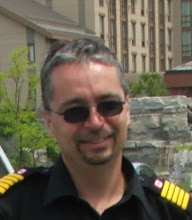
Major Explosions Put Firefighters At Risk
On the night of May 14 / 15 a fire in Lamesa Texas brought area firefighters to the scene of a tank battery fire. About 2 hours into the fire an explosion had the potential to kill and seriously injure firefighters, a near miss.
Check out the YouTube clips.
http://www.youtube.com/watch?v=DECyAxDk88U
slow motion http://www.youtube.com/watch?v=6qcrwNM74sg
Lyle Quan, Emergency Management & Training Inc. team member and firefighting expert provides some important comments below on dealing with similar situations.
Tank Battery Explosion – Points to Consider
When reviewing an incident like this fuel farm fire, I see there being two categories to consider. The first being the pre-planning stage; the second is the incident command stage. Both of these activities are inseparable. By this I mean that if you have not done a thorough pre-plan of the facility, then how can you expect to be prepared for the “worst case scenario”?
The following pre-plan and incident command points are by now means meant to be an all inclusive list. For each location and department, there will most likely be several other questions which are unique to each location. For now, you should at the very least consider the following questions as a basis to conducting your risk assessment.
Pre-plan stage:
When pre-planning a facility like the one in the video, fire crews need to ask themselves (and answer) the following questions.
* What is the maximum fuel load at the facility
* What type of storage tanks are you dealing with – hard tops or floating tops. Each presents its own unique dangers and attack considerations for the incident commander
* Does each storage tank have a proper dike area to contain fuel spills
* What level of firefighting does the facility have – do they have trained personnel to respond and/or assist
* What type of equipment does the facility and/or the fire department have to deal with such incidents
* Is the facility equipped with unmanned master streams
* What is your available water supply for a worst case scenario – do you even have the ability to extinguish such a large scale incident
* What evacuation plans and routes are available for staff and emergency services personnel
* What mutual aid or automatic aid response do you have for such an incident
* Are you conducting training with the facilities response staff – does everyone know what to do in such an emergency
* Do the facility staff have an accountability system to identify who is on site
* What about product containment and clean up after the fire.
Incident Command stage:
The incident commander must be able to ask and answer three basic questions;
1) what do I have (what is the incident);
2) what do I have (in resources) to deal with it; and
3) what else will I need (if anything) to mitigate the situation.
In no specific order, the following questions may help in addressing these three main questions.
* What is on fire and what is the potential fuel load
* Wind direction – attack (if at all possible) from the upwind side. As noted in the video the crews appeared to be in an upwind location as noted by the drift pattern of the smoke plume
* Identify a safe explosion/collapse zones for emergency services personnel and other personnel/civilians that may be in the area
* Use your staff sparingly – you should always anticipate the worst
* Are your lines causing more of a problem by spreading the fuel – this can be done by over filling the diked off areas
* Do you need to use manned lines to deal with this situation – why?
* Is the use of a firefighting foam product a viable option or has this leak/fire spread too far to properly contain under such conditions
* Where are you going to set up a triage area for injured/exhausted personnel
* Setting up your zones (hot, warm and cold) to deal with staff, media, medical, etc.
* How long do you expect to be on site – fresh staff to battle the situation
* Are you sensitive to the signs of tank/product explosion – aggressiveness of flames venting from the tanks or sounds of high pressure release.
Hope these few points give our emergency services personnel some food for thought.
Cheers
Lyle
Lyle Quan has 28 years of emergency service leadership experience. Lyle started his career as a police officer before becoming a career firefighter, now a Deputy Chief for a career fire department with responsibilities that include oversight of a large EMS operation and Chief of a Volunteer Fire Department. While moving up through the fire service ranks Lyle was a training officer and Divisional Chief of Training for a career fire department.
In addition to being on the Emergency Management & Training team, Lyle is a professor at Dalhousie University in the Fire Service Leadership & Administration Program and Lakeland College in the Bachelor’s Degree of Applied Business: Emergency Services program. He is an associate instructor for Emergency Management Ontario and the Ontario Fire College.
For more information on how Emergency Management & Training can assist your Fire Department put training plans, guidelines and strategies in place for major events email or give us a call at 1-888-421-0665.
